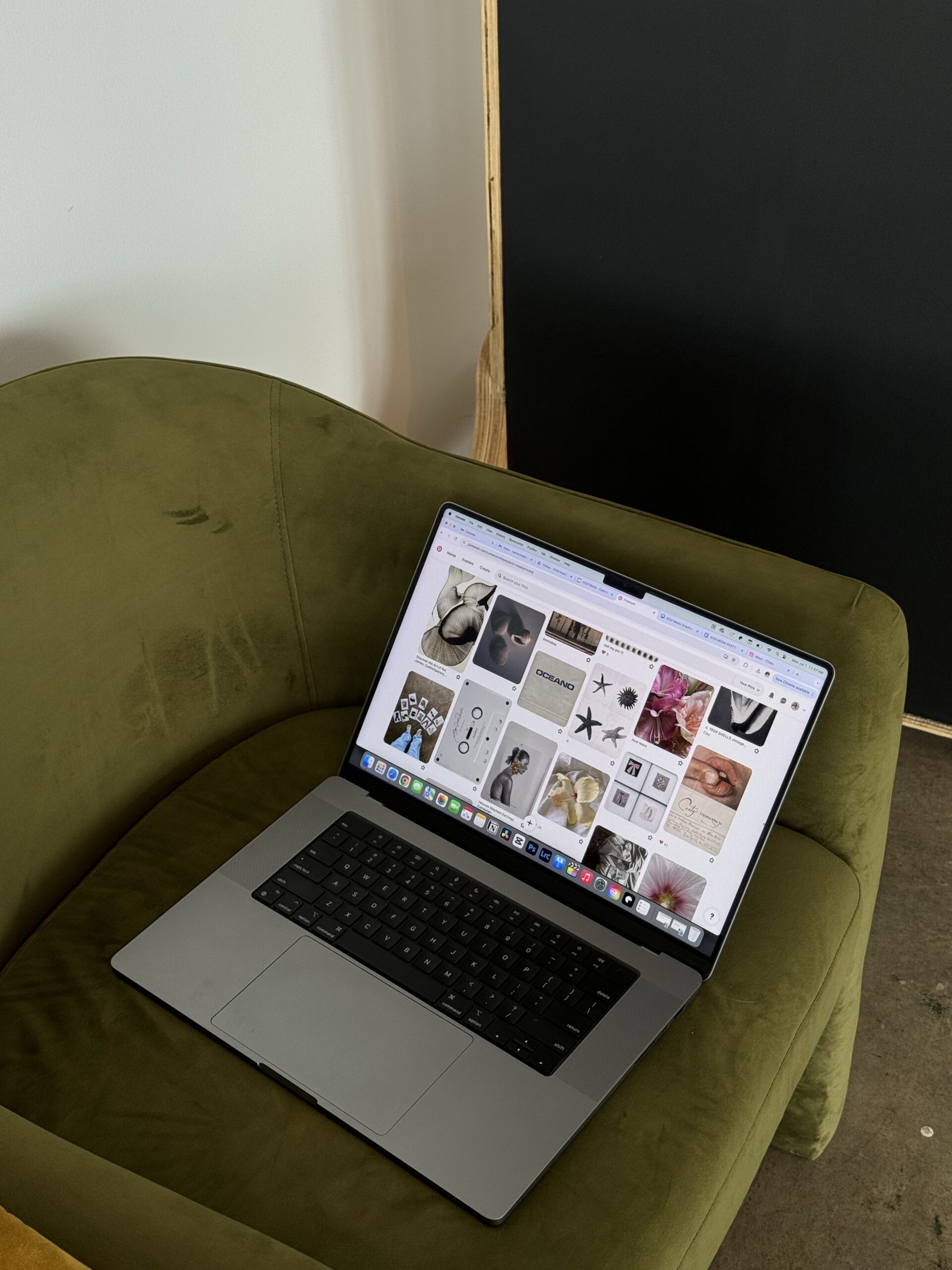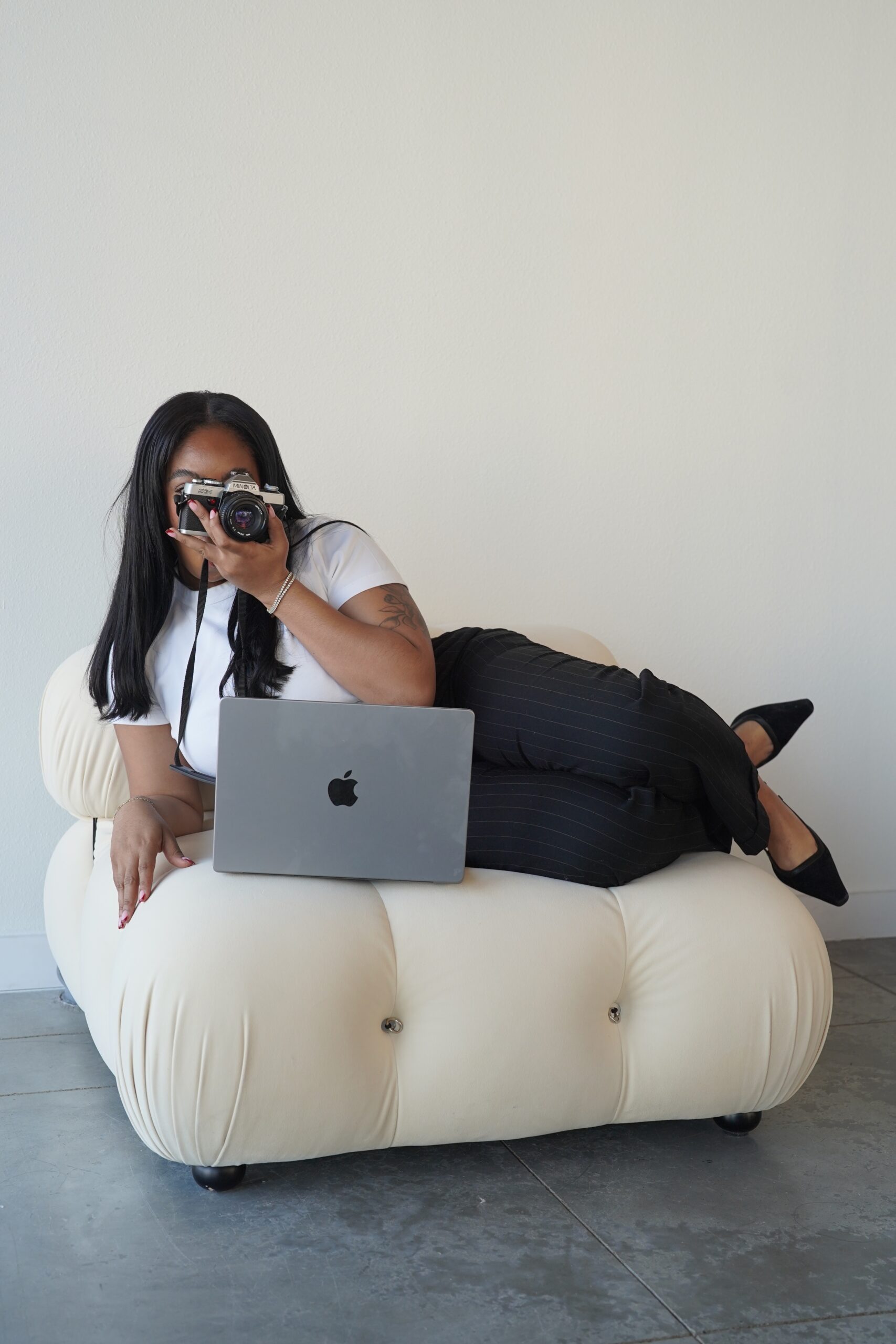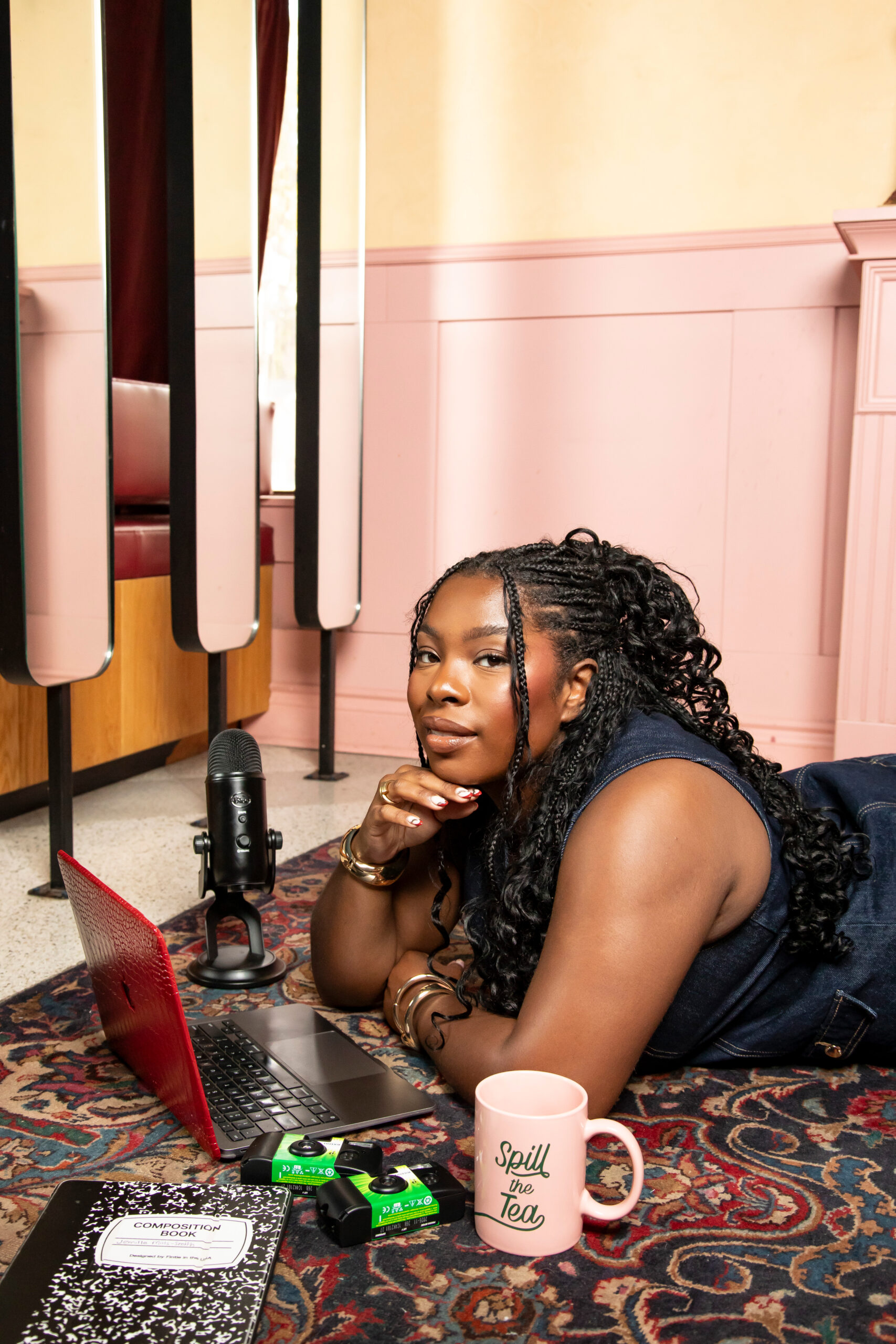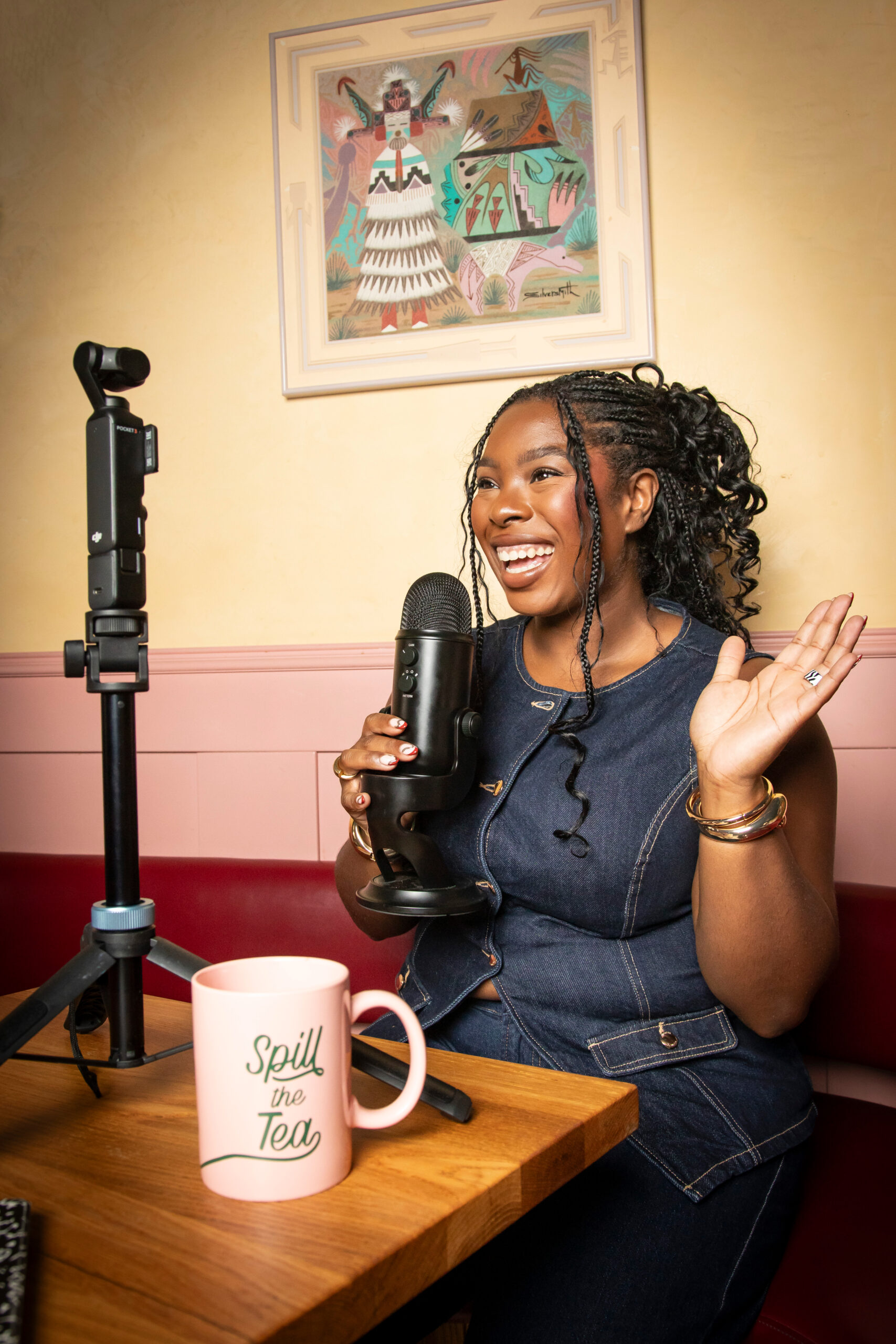HEY FRIEND!
I'm jemilla!
In the past 4 years, I’ve cut my teeth strategizing & writing award-worthy, revenue-increasing, results-snatching copy. And what really lights my fire is writing for woman-owned and BIPOC-led brands. I’m talkin’ the first day after a braiding appointment type of excited! Energizing them to go big with their bold ideas so that when launch time happens, the world thinks “OMG FINALLY, I’ve been waiting for something like this.” And giving them the tools to diversify the market.
about me
services
7 Common Copywriting Mistakes & How To Fix Them
November 5, 2024
Let’s talk about that thing you’re probably doing right now but wishing someone else would do for you — copywriting. You know, those words that are everywhere: your website, your emails, your social posts, that billboard you passed on your way to get coffee…
Here’s the tea: According to the Nielsen Norman Group, the average person reads only 20% of the words on a page. That means your copy needs to work harder than Kamala Harris’ marketing team.
And just to further prove my point:
- According to Unbounce, well-written landing page copy can increase conversion rates by up to 30%
- Personalized email copy can improve click-through rates by 14% and conversion rates by 10%. And emails with compelling subject lines can have a 26% open rate increase (Hubspot)
- High-quality content can generate 3x more leads than generic content (Content Marketing Institute)
- According to a Buzzsumo study, social media posts with engaging copy see 2.3 times more engagement
- SEMrush data shows that websites with high-quality content see 2.4x more organic traffic
Yeah, those words? They’re worth their weight in gold. So when you come across common copywriting mistakes that devalue your words, you’ll want to have a fix for them!
Why Copywriting Matters
Let’s get real for a second: People aren’t just buying your product anymore — they’re buying into your brand. But once they do buy into your brand, it does tend to translate into sales!
According to Headstream, if people love a brand’s story, they’re 55% more likely to buy the product in the future, 44% will share the story, and 15% will buy the product immediately.
Whether it’s that cheeky TikTok caption or that subway ad that made you laugh out loud, effective copy is the difference between “meh” and “must-have.”
7 Common Copywriting Mistakes (+ How to Fix Them)
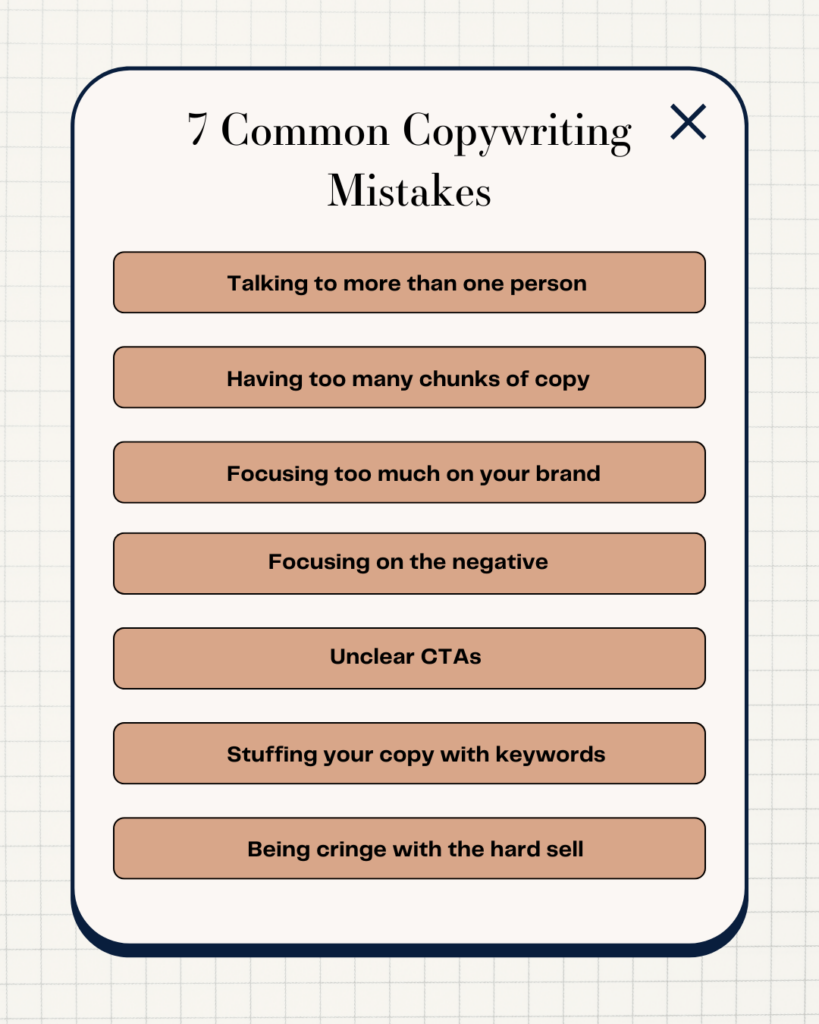
Talking to more than one person
This is a recipe for disaster, because if you try to talk to everybody you will end up appealing to nobody. So, focus on one reader in your message. If you want to speak to someone else, write something else altogether!
Having too many chunks of copy
Nobody likes to read swaths of copy without giving their eyes a break. So always try to break up copy with some kind of visual aid — pictures, videos, graphics, etc.
Focusing too much on the brand
People are inherently selfish creatures and want to know what they get out of things. Whether that’s reading your copy or buying your product. So put the spotlight on them.
i.e., “Catapult your click-through rate” vs. “We’ll show you how to increase your click-through rate with our award-winning process”. See the difference?
Focusing on the negative
People are always saying “pick at their pain points”, but copy with a positive message is more memorable. So focus instead on the benefits they can enjoy and the dreams they can achieve with your product.
It’s the difference between “Don’t Miss Out” and “Clear Your Breakouts Today”
Unclear CTAs
There’s a difference between a call to action (CTA) — a button that tells readers what to do — and a call to value (CTV) — a button that communicates the benefits of an offer, and why they should take action.
When you use a CTA, you want it to truly inspire action. And that means using verbs like “Register” and power words like “Secret”. It’s how you get powerful CTAs like “Register & Unlock the Secret to Our Successful Email Campaigns” or “Catapult Your CTR”.
And if you want to increase your click-through rate, read this.
Stuffing your copy with keywords
Search engines hate it and people hate it. It doesn’t sound human, and it’ll only signal search engines like Google that you’re pandering to try and rank (which they’ll just take as a sign to not have your page rank). It’s recommended to use 1-2 keywords for every 100 words of copy, so make that your benchmark.
Being cringe with the hard sell
No one likes a “Buy My Course Now!” kind of relationship. They want to enjoy a good story, connect with your values, feel seen and heard, truly understand the benefit they get from giving you their hard-earned money, and THEN buy your product. So don’t sell without doing all these things first.
Ready to Level Up Your Copy Game?
Want more tips like these delivered straight to your inbox? Join my weekly newsletter where I spill all the copywriting tea, share what’s working NOW in marketing, and help you find (and stick to) your brand voice.
Because avoiding these common copywriting mistakes isn’t just about better writing — it’s about better business.

